Renault adds to its stable of zero-emission electric cars with the Twizy

The sight of a dozen Renault Twizys snaking along Ibiza's mountain roads was all that was needed to distract the sun worshipers from their beachy reveries during a recent presentation. The tiny rolling pods were like props from a sci-fi film. Even Renault has taken to referring to them as UDOs, or Unidentified Driving Objects.
This being Ibiza, though, the attention was positive - the sunshine and chilled vibe complementing a non-conformist car. Twizy may not be so readily accepted on the more self-conscious roads of Europe's capitals, where it was designed to get traffic moving again, but here it proved a perfect run-around.
Twizy is the latest model in Renault's family of zero-emission (ZE) electric cars that already include the Fluence, Kangoo and, later this year, the Zoe. At just 2.34m by 1.24m, the two-seater quadricycle is available with or without doors; the scissor doors only partially enclose the car in any case. The more powerful of the two models accelerates to 28mph in six seconds and offers a top speed of just over 50mph (we managed 53mph going downhill).
The battery promises a 62-mile (100km) range in eco-mode and takes 3.5 hours to charge - the bright blue cord that fits neatly into the nose works with any standard 220V outlet. This makes it ideal for short distance travel, but in apartment-dwelling cities like London and Paris, charging the Twizy won't be such a breeze. As with its other ZE vehicles, Renault will lease out the battery on a monthly subscription.
Renault has shown restraint by keeping Twizy's gadgety look uncluttered, almost innocent. The scissor doors give it a tongue-in-cheek futuristic look, lifting up without effort or noise. The driver can see the road beneath his feet thanks to transparent plastic in the floor. The absence of windows creates a semi-open-air drive cocooned by Renault's safety features.
Seats are hard and upright, befitting a commuting machine, and the seatbelts wrap around from both sides. The compact rear seat requires some agility to squeeze into, but once in it's a snug fit - and quite fun for a passenger. Sadly lacking is any substantial storage space, just two three-litre bins on either side of the steering wheel and a further 31 litres behind the passenger seat.
Back in 2001, as Toyota was rolling out its Prius to unprecedented kudos and market share, Renault introduced its eccentric Avantime, a sales disaster but a cult in the making. This is Renault's second chance. While other carmakers have prototyped urban pods, the French marque is the first to bring an all-electric into mainstream production. With DJ David Guetta as its brand ambassador, it's clearly aimed at young first-time buyers, particularly in markets where smaller engines can be driven without a licence. It's this market that has turned its back on the traditional planet-polluting, ego-enhancing automobile, and Renault hopes to tap into that.

Only 2.34m by 1.24m, Twizy is a two-seater quadricycle, Renault's latest zero-emission (ZE) electric car
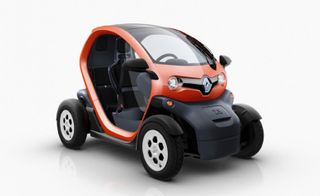
It is available with or without doors

The lightweightscissor doors give the car a futuristic feel. They lift up in the air without any effort or noise

The scissor doors only partially enclose the car

Other manufacturers have made similar urban-pod prototypes, but Renault is the first to bring its all-electric machine into mainstream production
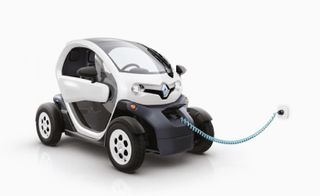
It takes 3.5 hours to charge the battery for a 62 mile (100km) range in eco-mode. The bright blue cord fits neatly into the car’s nose and works with any standard 220V electrical outlet, making it ideal for short-distance travel
Wallpaper* Newsletter
Receive our daily digest of inspiration, escapism and design stories from around the world direct to your inbox
-
 Discover Acqua di Parma’s new Mandarino di Sicilia fragrance at Milan Design Week 2024
Discover Acqua di Parma’s new Mandarino di Sicilia fragrance at Milan Design Week 2024Acqua di Parma and Fornice Objects bring the splendour of Sicilian mandarin fields to Milan to celebrate new fragrance Mandarino di Sicilia
By Simon Mills Published
-
 First look at Samba Room, London’s innovative cocktail lounge packed with Brazilian energy
First look at Samba Room, London’s innovative cocktail lounge packed with Brazilian energyLondon’s Samba Room, an extension of SushiSamba, is a dynamic bar, lounge and private dining space designed by Fabled Studio
By Tianna Williams Published
-
 Thom Browne shows how to make the perfect bed with theatrical performance at Milan Design Week 2024
Thom Browne shows how to make the perfect bed with theatrical performance at Milan Design Week 2024American fashion designer Thom Browne makes his Milan Design Week debut with a new homeware collection created in collaboration with historic linen company Frette
By Scarlett Conlon Published
-
 The return of the Geneva Motor Show (to Geneva) as a place for global debuts
The return of the Geneva Motor Show (to Geneva) as a place for global debutsThe Geneva Motor Show is back. After 2020’s pandemic cancellation and an ‘exported’ event in Qatar in 2023, the organisers of GIMS 2024 had their work cut out to stay relevant. Here are our highlights
By Guy Bird Published
-
 Year in review: top 10 transport design stories of 2023, selected by Wallpaper’s Jonathan Bell
Year in review: top 10 transport design stories of 2023, selected by Wallpaper’s Jonathan BellJonathan Bell’s top 10 transport design stories of 2023 span from electric campers and microcars to flying yachts and classic car recreations
By Jonathan Bell Published
-
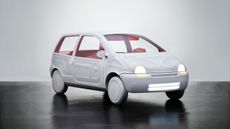 Sabine Marcelis radically reinterprets Renault Twingo
Sabine Marcelis radically reinterprets Renault TwingoSabine Marcelis’ Renault Twingo is a conceptual recreation of the cult 1990s city car that re-evaluates light, transparency, form and function
By Jonathan Bell Published
-
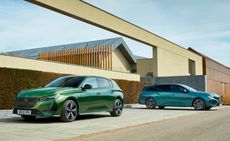 Peugeot’s sparky 308 gets hybrid power and handsome lines
Peugeot’s sparky 308 gets hybrid power and handsome linesThe Peugeot 308 proves that mass-market design needn’t be dull, blending hybrid power with sharp lines and excellent detailing
By Jonathan Bell Published
-
 BMW Motorrad brings out the big guns for its newest cruisers
BMW Motorrad brings out the big guns for its newest cruisersBMW Motorrad R 18 Bagger and Transcontinental set the tone for high-voltage cruising with a brand collaboration with speaker specialist Marshall
By George Chapman Last updated
-
 Dacia’s new Manifesto concept is a true outdoor utility vehicle
Dacia’s new Manifesto concept is a true outdoor utility vehicleUtilitarian auto brand Dacia sets a bold new agenda with its Manifesto, a concept car pitched at the active outdoor market
By Jonathan Bell Last updated
-
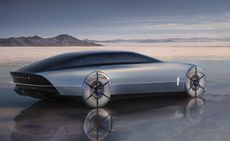 The sun sets on traditional supercars at California’s Monterey Car Week
The sun sets on traditional supercars at California’s Monterey Car WeekMonterey Car Week, the world’s most prestigious car gathering, is showcasing ever-more extravagant special editions, coachbuilt cars and all-new electric concepts. Here are seven key machines from 2022
By Rory FH Smith Last updated
-
 Is McLaren’s GT a sports car, a tourer, or the best of both?
Is McLaren’s GT a sports car, a tourer, or the best of both?The McLaren GT is a capable all-rounder dressed up in svelte supercar clothes. It might also be the last of its type
By Jonathan Bell Last updated